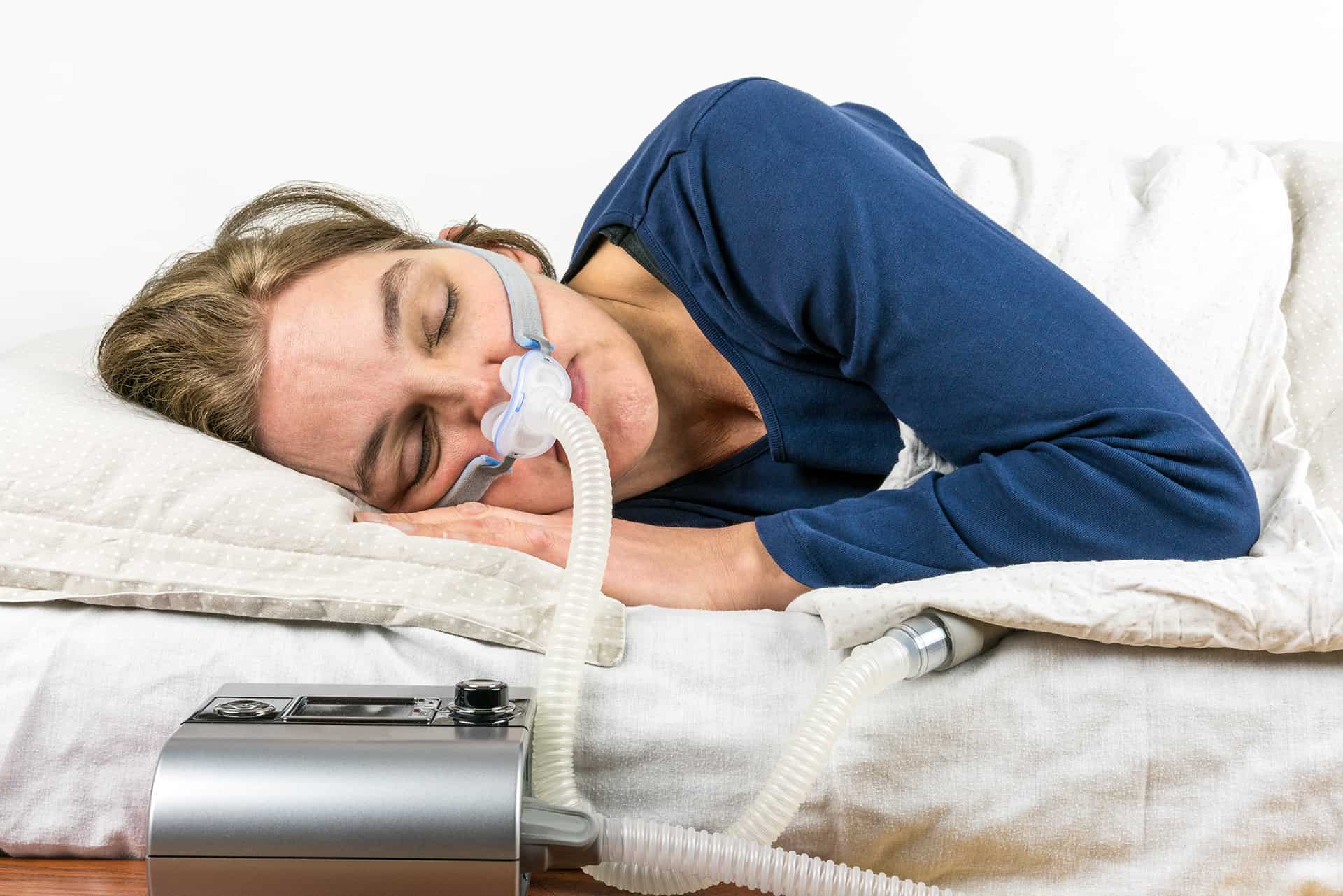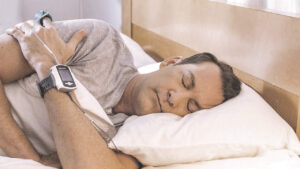
Continuous positive airway pressure is the best treatment for obstructive sleep apnea (CPAP). Pressured air from the CPAP machine is delivered by a hose to a mask, which the patient wears to push up their airway physically. This allows oxygen to enter their lungs.
A mouth breather is someone who generally inhales and exhales via their mouth as opposed to their nose. While the patient is sleeping with their lips open, the air from best cpap masks entering their nose will exit out of their mouth. This problem causes the CPAP masks pressure to enter the airway to be lower than what is required to keep the airway open, which reduces the treatment’s efficacy.
A heated humidifier
The first line of treatment for mouth breathing and dry mouth for sleep doctors is often the use of warm humidification. It is easy to put specifically designed humidifiers like this one into a CPAP machine.
Humidification research has a lengthy history. In a 1995 study, Hayes found that utilizing nasal CPAP while having your mouth open causes nasal mucosal blood flow to rise, which causes congestion. Hayes found that adding moisture to the air that enters the nasal CPAP may be able to reduce the increased mucosal blood flow.
Heated humidification reduces the negative effects of upper airway symptoms and makes patients feel more rested when they awaken after wearing CPAP masks with heated humidification, according to a 1999 Massie study. Massie indicated that compliance gains could be attained sooner if patients start warm humidification right away with CPAP.

In a 2000 research, Araujo found that heated humidification significantly lowers air dryness even during mouth leaks, while full-face masks totally remove it during CPAP.
Complete-face CPAP masks
Full-face CPAP masks were developed as a remedy for the problem that mouth breathing allows air to escape from the compressed airway tract. A triangular-shaped full face mask covers the lips and nose. By doing this, whether air enters from the mouth or the nose, the airway will stay open. According to the Araujo study, using a full face mask would entirely prevent mouth dryness.
Mouth breathing is made possible with full face CPAP masks, however since more of the mask’s surface is in touch with the skin, they may be uncomfortable and prone to leaks. While the lips may still be opened while sleeping, most individuals like nasal masks that just cover the nose. Chinstraps are used to stop mouth breathing when wearing a nasal mask.
Chin straps
Another typical solution for mouth breathing while using a CPAP mask is chin straps. The chin straps are made of elastic material and fastened with Velcro. Chin straps are used to keep the lips sealed. Chin straps go beneath the chin and clasp at the top of the head.
The greatest ones are expensive, despite the fact that they could be helpful. Some of them tend to cut across the ear, irritating or encroaching on sensitive tissue, which leads to issues. They may be uncomfortable.
Because chin straps are made of elastic, they often need to be pulled quite tightly in order to keep the lips together when sleeping. When more power is needed to close the lips, the chin is pulled posteriorly more. The airway is more likely to get restricted as a result of the receding chin since the jaw is pushed closer to the neck. In order to keep the lips closed and in its natural position, non-stretchable chin straps can be more effective.
Chest press-up strips
Sometimes it could be tough to control your speech! Some inventors came up with a U-shaped adhesive tape strip that they claim stops mouth opening since they were aware that chin straps often don’t function on people. I gave it a go, and while it worked really well, air was still getting through the edges of my lips. I had to tightly pull the skin of my face together to get the strip to completely shut my lips. Despite being rather unpleasant to wear, the device was functional at the time.
applying mouth tape
Taping your mouth shut with a piece of medical paper tape that crosses your lips and extends beyond the corners of your mouth is a certain way to stop mouth breathing. That seems odd, huh? Yes, I agree, however mouth breathing is a pretty wonderful alternative. With the correct sort of medical paper tape, you may get a much better night’s sleep and avoid health problems caused by mouth breathing. It doesn’t hurt either.

Other Domains Have Problems?
Is it correct that dealing with mouth breathing sounds challenging? If your CPAP is enhancing your overall health whether you mouth breathe or not, why address your mouth breathing?
The causes and effects of mouth breathing
Mouth breathing, or xerostomia as it is often referred to, has a number of reasons. Colds, sinus/allergies, and other disorders brought on by the environment will resolve rapidly, as will nasal congestion. It is better to treat chronic mouth breathing, which is brought on by a deviated septum or facial bone structures, so that nasal breathing may occur.
breathing via the nose
It is typical to breathe via the nose. Life depends on getting oxygen into our body. Before entering the lungs, air is warmed, made more humid, and cleaned in the nose. When compared to mouth breathing, nose breathing improves weight loss and digestion, increases immunity and resistance to the common cold, lowers blood pressure, lowers the risk of heart disease, lessens anxiety and depression, improves concentration and memory, lessens attention deficit and hyperactivity, eases headaches, migraines, back pain, sciatica, and neuralgia, and helps us feel more rested when we wake up.
Mouth respiration
Mouth breathing reduces the advantages of CPAP mask treatment, as was previously noted. Mouth breathing also plays a role in a variety of medical and dental conditions.
Mouth breathing is strongly associated with atopic dermatitis, malocclusion of the teeth, reduced mealtime chewing activity, susceptibility to gum disease, speech difficulties, abnormal facial growth and development, longer and more challenging braces treatment, and tongue-tie phenomena, particularly in children.
Both children and adults who mouth breathe often get dry mouth, which means there isn’t any saliva in the mouth. The saliva on the teeth provides them with defense against cavities. When the mouth is dry from mouth breathing, the pH of the mouth decreases to an acidic level. The likelihood of developing cavities is increased by both a lower pH and less saliva. Furthermore, mouth breathing could cause bad breath.
Your sinuses create 25% of the body’s nitric oxide when you breathe through your nose. Nitric oxide improves memory and learning, eliminates pathogens including bacteria and viruses, regulates blood pressure, reduces inflammation, and fortifies the immune system. Additionally, it improves the lungs’ ability to take in oxygen. By mouth breathing, much of the nitric oxide’s health benefits are lost.
The body creates two quarts of mucus daily, which are eliminated by nasal breathing. This mucus won’t be released if you breathe via your mouth, which may lead to infections, ear infections, and sinusitis.
Taste and scent are interconnected. This link is interrupted when you mouth breathe, which may have an impact on how hungry or full you feel and lead you to eat more than you should in an attempt to appease your taste sensations.
Additionally, there are significant neurological connections between your nose and heart. Mouth breathing may raise blood pressure, heart rate, and stress levels.



